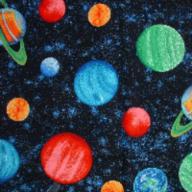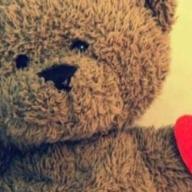我想問幾時+s/es ies同+ing??
可否各舉例子?
thx~
幾時+s/es ies同+ing
2010-09-16 9:59 am
回答 (3)
2010-09-16 11:02 am
✔ 最佳答案
a noun + "s" at the end = turns this noun from one object into more than one (plural)Ex: questions, cars, papers, nuts, animals, humans, books, etc.........
a noun + "es" at the end = same as above....for more than one (plural)....
use for the nouns ending in "s, z, ch, sh, or post-consonantal y"
Ex: dashes ("sh"), passes ("ss"), losses ("ss"), riches ("ch"), etc
for "ies", is the same thing, but use when the nouns ending in "y".
Ex:
1) Baby (single) -> Babies (more than one),
2) Study (single) -> Studies (more ...)
3) Party (single) -> Parties (more ...)
"+ing" = use at the end of the verb to express the action of the verb or its result.構成動詞現在分詞
Ex:
1) I am writing a book. 我在寫一本書.
2) I am driving. 駕駛
3) She is laughing. 她在笑
2010-09-16 3:35 pm
NOUN 加S/ES
多數 Noun 加 s/es, noun 從 singular noun 變成 plural noun.
e.g. apples, cars, books, girls
I eat an apple. (一個蘋果, singular)
I eat two apples. (兩個蘋果, plural)
Noun ends in ch, sh, x, s, 從 singular 變 plural, 要加 +es.
One church, ten churches
One watch, two watches
One bus, two buses
One box, ten boxes
Noun ends in y, y前面字母不是一個 vowel (a,e,i,o,u), 從 singular noun變成 plural noun, 取消個y, 加 -ies.
one lorry – two lorries
a baby – three babies.
one fly – two flies.
如果是 vowel (a,e,i,o,u), 只需要加 s
one boy – two boys
a donkey – two donkeys
有些 NOUN, 從 singular noun變成 plural noun不需要加 s. 這是例外字.
one deer – two deer
one sheep – two sheep
one fish – two fish or two fish(es)
a salmon – two salmon
a trout – two trout(s)
不是所有的 nouns end in –s 是 plural noun, 他們仍然 singular.
Mathematics IS my favourite subject.
e.g. Physics, Statistics, Genetics, News, Economics
VERB 加 S/ES , or IES 是用在 third person singular.
Third person singular:- He, She, It, John, Mary, man, dog
He sleeps late every day. (sleep - sleeps)
Mary takes a walk. (take - takes)
John washes his hair every morning. (wash - washes)
The baby cries. (cry – cries)
VERB 加- ing 變成 present participle, 用在 continuous tense 或者變成 adjective.
He is reading a book now. (Present Continuous Tense)
He was reading an interesting book when the doorbell rang.
(Past Continuous Tense) (“interesting“ is an adjective)
He said he saw a flying saucer. (“flying” is an adjective)
轉 simple verb 做 Present Participle, 有時需要轉 form, 留意下列:
sit – sitting
stop – stopping
drive – driving
write – writing
lie – lying
die – dying
dye - dyeing
traffic – trafficking
panic - panicking
多數 Noun 加 s/es, noun 從 singular noun 變成 plural noun.
e.g. apples, cars, books, girls
I eat an apple. (一個蘋果, singular)
I eat two apples. (兩個蘋果, plural)
Noun ends in ch, sh, x, s, 從 singular 變 plural, 要加 +es.
One church, ten churches
One watch, two watches
One bus, two buses
One box, ten boxes
Noun ends in y, y前面字母不是一個 vowel (a,e,i,o,u), 從 singular noun變成 plural noun, 取消個y, 加 -ies.
one lorry – two lorries
a baby – three babies.
one fly – two flies.
如果是 vowel (a,e,i,o,u), 只需要加 s
one boy – two boys
a donkey – two donkeys
有些 NOUN, 從 singular noun變成 plural noun不需要加 s. 這是例外字.
one deer – two deer
one sheep – two sheep
one fish – two fish or two fish(es)
a salmon – two salmon
a trout – two trout(s)
不是所有的 nouns end in –s 是 plural noun, 他們仍然 singular.
Mathematics IS my favourite subject.
e.g. Physics, Statistics, Genetics, News, Economics
VERB 加 S/ES , or IES 是用在 third person singular.
Third person singular:- He, She, It, John, Mary, man, dog
He sleeps late every day. (sleep - sleeps)
Mary takes a walk. (take - takes)
John washes his hair every morning. (wash - washes)
The baby cries. (cry – cries)
VERB 加- ing 變成 present participle, 用在 continuous tense 或者變成 adjective.
He is reading a book now. (Present Continuous Tense)
He was reading an interesting book when the doorbell rang.
(Past Continuous Tense) (“interesting“ is an adjective)
He said he saw a flying saucer. (“flying” is an adjective)
轉 simple verb 做 Present Participle, 有時需要轉 form, 留意下列:
sit – sitting
stop – stopping
drive – driving
write – writing
lie – lying
die – dying
dye - dyeing
traffic – trafficking
panic - panicking
2010-09-16 2:52 pm
+s/es
1.眾數
eg. There are two apples .
2.he/she/it
有HE/SHE/IT 個句要加S.
eg. He has a book.
ies
eg.
carry + s = carries
ing
加ing 係現在進行式
或
過去進行式
eg.
do ---> doing
現在進行式
He is doing homework.
過去進行式
He was doing homework.
1.眾數
eg. There are two apples .
2.he/she/it
有HE/SHE/IT 個句要加S.
eg. He has a book.
ies
eg.
carry + s = carries
ing
加ing 係現在進行式
或
過去進行式
eg.
do ---> doing
現在進行式
He is doing homework.
過去進行式
He was doing homework.
收錄日期: 2021-04-13 17:31:12
原文連結 [永久失效]:
https://hk.answers.yahoo.com/question/index?qid=20100916000051KK00095


